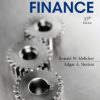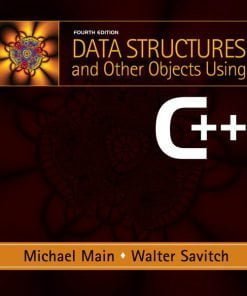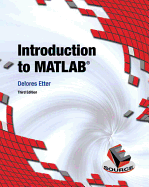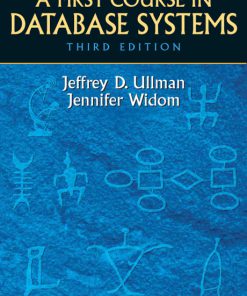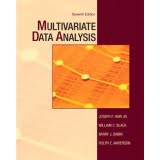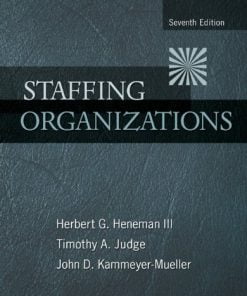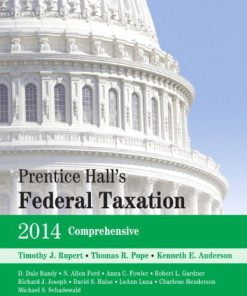Solution Manual for Mechanical Vibrations, 5/E 5th Edition Singiresu S. Rao
$35.00 Original price was: $35.00.$26.50Current price is: $26.50.
Solution Manual for Mechanical Vibrations, 5/E 5th Edition Singiresu S. Rao
Solution Manual for Mechanical Vibrations, 5/E 5th Edition Singiresu S. Rao digital download immediately after payment is complete.
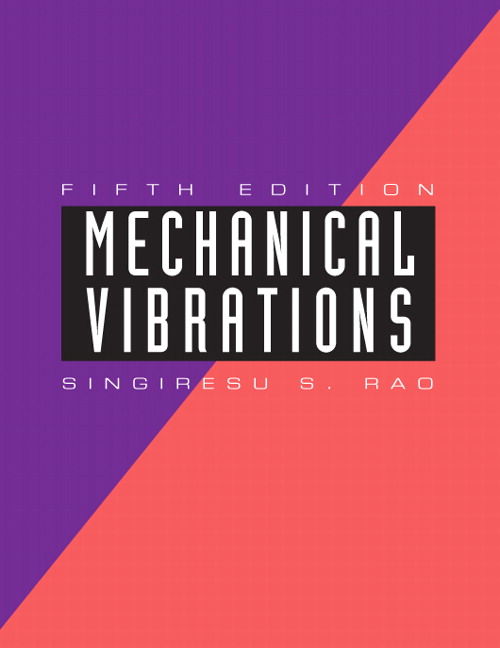
Product details:
1.1 Preliminary Remarks
¿
1.2 Brief History of Vibration
1.2.1 Origins of Vibration
1.2.2 From Galileo to Rayleigh
1.2.3 Recent Contributions
¿
1.3 Importance of the Study of Vibration
¿
1.4 Basic Concepts of Vibration
1.4.2 Elementary Parts of Vibrating Systems
1.4.1 Vibration
1.4.3 Degree of Freedom
¿
1.5 Classification of Vibration
1.4.4 Discrete and Continuous Systems
1.5.4 Deterministic and Random Vibration
1.5.3 Linear and Nonlinear Vibration
1.5.2 Undamped and Damped Vibration
1.5.1 Free and Forced Vibration
¿
1.6 Vibration Analysis Procedure
¿
1.7 Spring Elements
1.7.1 Nonlinear Springs
1.7.2 Linearization of a Nonlinear Spring
1.7.3 Spring Constants of Elastic Elements
1.7.4 Combination of Springs
1.7.5 Spring Constant Associated with the Restoring Force due to Gravity
¿
1.8 Mass or Inertia Elements
1.8.1 Combination of Masses
¿
1.9 Damping Elements 45
1.9.1 Construction of Viscous Dampers 46
1.9.3 Combination of Dampers 52
1.9.2 Linearization of a Nonlinear Damper 52
¿
1.10 Harmonic Motion 54
1.10.1 Vectorial Representation of Harmonic Motion 56
1.10.2 Complex Number Representation of Harmonic Motion 57
1.10.3 Complex Algebra 58
1.10.4 Operations on Harmonic Functions 59
1.10.5 Definitions and Terminology 62
¿
1.11 Harmonic Analysis
1.11.2 Complex Fourier Series
1.11.3 Frequency Spectrum
1.11.4 Time and Frequency Domain Representations
1.11.5 Even and Odd Functions
1.11.6 Half-Range Expansions
1.11.7 Numerical Computation of Coefficients
¿
1.12 Examples Using Matlab7
¿
1.13 Vibration Literature
References
Chapter Summary
Review Questions
Problems
Design Projects
¿
CHAPTER 2 Free Vibration of Single Degree of Freedom Systems
¿
2.1 Introduction 126
¿
2.2 Free Vibration of an Undamped Translational System
2.2.1 Equation of Motion Using Newton’s Second Law of Motion
2.2.2 Equation of Motion Using Other Methods
2.2.3 Equation of Motion of a Spring-Mass System in Vertical Position
2.2.4 Solution
2.2.5 Harmonic Motion
¿
2.3 Free Vibration of an Undamped Torsional System 1¿
2.3.1 Equation of Motion
2.3.2 Solution
¿
2.4 Response of First Order Systems and Time Constant
¿
2.5 Rayleigh’s Energy Method
2.6.2 Solution
2.6.1 Equation of Motion
2.6.3 Logarithmic Decrement
2.6.4 Energy Dissipated in Viscous Damping
2.6.5 Torsional Systems with Viscous Damping
¿
2.7 Graphical Representation of Characteristic Roots and Corresponding Solutions
2.7.1 Roots of the Characteristic Equation
2.7.2 Graphical Representation of Roots and Corresponding Solutions
¿
2.8 Parameter Variations and Root Locus Representations
2.8.1 Interpretations of and in s-plane
2.8.2 Root Locus and Parameter Variations
¿
2.9 Free Vibration with Coulomb Damping
2.9.1 Equation of Motion
2.9.2 Solution
2.9.3 Torsional Systems with Coulomb Damping
¿
2.10 Free Vibration with Hysteretic Damping
¿
2.11 Stability of Systems
Chapter Summary
Review Questions
References
Problems
Design Projects
¿
CHAPTER 3 Harmonically Excited Vibration
3.1 Introduction
¿
3.2 Equation of Motion
¿
3.3 Response of an Undamped System Under Harmonic Force
3.3.2 Beating Phenomenon
3.3.1 Total Response
¿
3.4 Response of a Damped System Under Harmonic Force
3.4.1 Total Response
3.4.2 Quality Factor and Bandwidth
¿
3.5 Response of a Damped System Under
¿
3.6 Response of a Damped System Under the Harmonic Motion of the Base
3.6.1 Force Transmitted
3.6.2 Relative Motion
¿
3.7 Response of a Damped System Under Rotating Unbalance
¿
3.8 Forced Vibration with Coulomb Damping
¿
3.9 Forced Vibration with Hysteresis Damping
¿
3.10 Forced Motion with Other Types of Damping
¿
3.11 Self-Excitation and Stability Analysis
¿3.11.1 Dynamic Stability Analysis
¿3.11.2 Dynamic Instability Caused by Fluid Flow
¿
3.12 Transfer Function Approach
¿
3.13 Solutions Using Laplace Transforms
¿
3.14 Frequency Transfer Functions
3.14.1 Relation Between the General Transfer function T(s)
and the Frequency Transfer Function
3.14.2 Representation of Frequency Response Characteristics
¿
3.15 Examples Using Matlab
References
Chapter Summary
Review Questions
Problems
Design Projects
¿
CHAPTER 4 Vibration Under General Forcing Conditions
4.1 Introduction
¿
4.2 Response Under a General Periodic Force
4.2.1 First-Order Systems
4.2.2 Second-Order Systems
¿
4.3 Response Under a Periodic Force of Irregular Form
¿
4.4 Response Under a Nonperiodic Force
¿
4.5 Convolution Integral
4.5.1 Response to an Impulse
4.5.2 Response to a General Forcing Condition
4.5.3 Response to Base Excitation
¿
4.6 Response Spectrum
4.6.1 Response Spectrum for Base Excitation
4.6.2 Earthquake Response Spectra
4.6.3 Design Under a Shock Environment
¿
4.7 Laplace Transform
4.7.1 Transient and Steady-State Responses
4.7.2 Response of First-Order Systems
4.7.3 Response of Second Order Systems
4.7.4 Response to Step Force
4.7.5 Analysis of the Step Response
4.7.6 Description of Transient Response
¿
4.8 Numerical Methods
4.8.1 Runge-Kutta Methods
¿
4.9 Response to Irregular Forcing Conditions Using Numerical Methods
¿
4.10 Examples Using Matlab
References
Chapter Summary
Review Questions
Problems
Design Projects
¿
CHAPTER 5 Two Degree of Freedom Systems
¿
5.1 Introduction
5.2 Equations of Motion for Forced Vibration
5.3 Free Vibration Analysis of an Undamped System
5.4 Torsional System
5.5 Coordinate Coupling and Principal Coordinates
5.6 Forced Vibration Analysis
5.7 Semidefinite Systems
5.8 Self-Excitation and Stability Analysis
5.9 Transfer Function Approach
5.10 Solutions Using Laplace Transform
5.11 Solutions Using Frequency Transfer Functions
5.12 Examples Using Matlab
¿
Chapter Summary
Review Questions
References
Problems
Design Projects
¿
CHAPTER 6 Multidegree of Freedom Systems
¿
6.1 Introduction
¿
6.2 Modeling of Continuous Systems as Multidegree of Freedom Systems
¿
6.3 Using Newton’s Second Law to Derive Equations of Motion
¿
6.4 Influence Coefficients
6.4.1 Stiffness Influence Coefficients
6.4.2 Flexibility Influence Coefficients
6.4.3 Inertia Influence Coefficients
¿
6.5 Potential and Kinetic Energy Expressions in Matrix Form
¿
6.6 Generalized Coordinates and Generalized Forces
¿
6.7 Using Lagrange’s Equations to Derive Equations of Motion
¿
6.8 Equations of Motion of Undamped Systems in Matrix Form
¿
6.9 Eigenvalue Problem
¿
6.10 Solution of the Eigenvalue Problem
6.10.1 Solution of the Characteristic (Polynomial) Equation
6.10.2 Orthogonality of Normal Modes
6.10.3 Repeated Eigenvalues
¿
6.11 Expansion Theorem
¿
6.12 Unrestrained Systems
¿
6.13 Free Vibration of Undamped Systems
¿
6.14 Forced Vibration of Undamped Systems Using Modal Analysis
¿
6.15 Forced Vibration of Viscously Damped Systems
¿
6.16 Self-Excitation and Stability Analysis
¿
6.17 Examples Using Matlab
References
Chapter Summary
Review Questions
Problems
Design Project
¿
CHAPTER 7 Determination of Natural Frequencies and Mode Shapes
¿
7.1 Introduction
¿
7.2 Dunkerley’s Formula
¿
7.3 Rayleigh’s Method
7.3.1 Properties of Rayleigh’s Quotient
7.3.2 Computation of the Fundamental Natural Frequency
7.3.3 Fundamental Frequency of Beams and Shafts
¿
7.4 Holzer’s Method
7.4.1 Torsional Systems
7.4.2 Spring-Mass Systems
¿
7.5 Matrix Iteration Method
7.5.1 Convergence to the Highest Natural Frequency
7.5.2 Computation of Intermediate Natural Frequencies
¿
7.6 Jacobi’s Method
¿
7.7 Standard Eigenvalue Problem
7.7.1 Choleski Decomposition
7.7.2 Other Solution Methods
¿
7.8 Examples Using MATLAB
References
Chapter Summary
Review Questions
Problems
Design Projects
¿
CHAPTER 8 Continuous Systems
¿
8.1 Introduction
¿
8.2 Transverse Vibration of a String or Cable
8.2.1 Equation of Motion
8.2.2 Initial and Boundary Conditions
8.2.3 Free Vibration of a Uniform String
8.2.4 Free Vibration of a String with Both Ends Fixed
8.2.5 Traveling-Wave Solution
¿
8.3 Longitudinal Vibration of a Bar or Rod
8.3.1 Equation of Motion and Solution
8.3.2 Orthogonality of Normal Functions
¿
8.4 Torsional Vibration of a Shaft or Rod
¿
8.5 Lateral Vibration of Beams
8.5.1 Equation of Motion
8.5.2 Initial Conditions
8.5.3 Free Vibration
8.5.4 Boundary Conditions
8.5.5 Orthogonality of Normal Functions
8.5.6 Forced Vibration
8.5.7 Effect of Axial Force
8.5.8 Effects of Rotary Inertia and Shear Deformation
8.5.9 Other Effects
¿
8.6 Vibration of Membranes
8.6.1 Equation of Motion
8.6.2 Initial and Boundary Conditions
¿
8.7 Rayleigh’s Method 742
¿
8.8 The Rayleigh-Ritz Method 745
¿
8.9 Examples Using Matlab 748
References
Chapter Summary
Review Questions
Problems
Design Project
¿
CHAPTER 9 Vibration Control
¿
9.1 Introduction
¿
9.2 Vibration Nomograph and Vibration Criteria
¿
9.3 Reduction of Vibration at the Source
¿
9.4 Balancing of Rotating Machines
9.4.1 Single-Plane Balancing
9.4.2 Two-Plane Balancing
¿
9.5 Whirling of Rotating Shafts
9.5.1 Equations of Motion
9.5.2 Critical Speeds
9.5.3 Response of the System
9.5.4 Stability Analysis
¿
9.6 Balancing of Reciprocating Engines
9.6.1 Unbalanced Forces Due to Fluctuations in Gas Pressure
9.6.2 Unbalanced Forces Due to Inertia of the Moving Parts
9.6.3 Balancing of Reciprocating Engines
¿
9.7 Control of Vibration
¿
9.8 Control of Natural Frequencies
¿
9.9 Introduction of Damping
¿
9.10 Vibration Isolation
9.10.1 Vibration Isolation System with Rigid Foundation
9.10.2 Vibration Isolation System with Base Motion
9.10.3 Vibration Isolation System with Flexible Foundation
9.10.4 Vibration Isolation System with Partially Flexible Foundation
9.10.5 Shock Isolation
9.10.6 Active Vibration Control
¿
9.11 Vibration Absorbers
9.11.1 Undamped Dynamic Vibration Absorber
9.11.2 Damped Dynamic Vibration Absorber
¿
9.12 Examples Using Matlab
References
Chapter Summary
Review Questions
Problems
Design Project
¿
People also search:
mechanical vibrations equation sheet
mechanical engineering vibrations
mechanical vibrations formula sheet
mechanical vibrations examples
Related products
Solution Manual
International Business Competing in the Global Marketplace Hill 10th Edition Solutions Manual
Solution Manual
Solution Manual for Data Structures and Other Objects Using C++, 4/E Michael Main, Walter Savitch
Solution Manual
Solution Manual
Solution Manual
Prentice Hall’s Federal Taxation 2014 Comprehensive Rupert 27th Edition Solutions Manual


